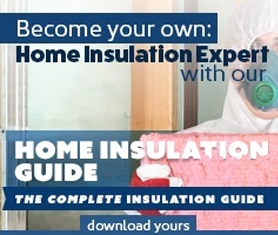Quick Answer: Check wall insulation by safely removing electrical outlet covers (with power off) and using a flashlight and probe to inspect wall cavities. Alternatively, thermal imaging cameras detect temperature differences indicating missing insulation. Las Vegas homeowners should check wall insulation regularly to maintain cooling efficiency and manage extreme desert heat.

Key Takeaways
- Safely checking wall insulation through electrical outlets requires no wall damage or major disruption
- Thermal imaging reveals insulation gaps and cold spots that increase Las Vegas cooling costs
- Poor wall insulation causes uneven temperatures and dramatically higher energy bills in desert climates
- Professional insulation assessment provides comprehensive evaluation beyond DIY inspection methods
Why Checking Wall Insulation Matters in Las Vegas
Las Vegas's extreme temperature swings make proper wall insulation critical for energy efficiency and comfort. Summer temperatures exceeding 115°F place enormous stress on inadequately insulated walls, forcing HVAC systems to run continuously while cooling costs skyrocket. Checking wall insulation helps identify problems before they become expensive energy drains.
Desert homes often suffer from insufficient or settled insulation that loses effectiveness over time. Regular inspection ensures your wall insulation provides the thermal barrier needed to combat Las Vegas's challenging climate.
Safe DIY Method: Checking Wall Insulation Through Outlets
Step 1: Safety First - Power Off Before checking wall insulation through electrical outlets, turn off power at your circuit breaker panel. Verify power is off using a voltage tester for complete safety during your wall insulation inspection.
Step 2: Remove Outlet Cover Carefully Select exterior wall outlets for checking wall insulation, as these locations reveal the most critical thermal barrier performance. Use a screwdriver to carefully remove the faceplate without disturbing the electrical box.
Step 3: Visual Inspection with Flashlight Shine a bright flashlight into the wall cavity around the electrical box. Look for visible insulation material when checking wall insulation. You should see fiberglass, cellulose, or spray foam if walls are properly insulated.
Step 4: Physical Probe Test Insert a thin, non-conductive probe (plastic stick, wire hanger, or zip tie) into gaps beside the electrical box when checking wall insulation. Gently feel for resistance indicating insulation presence. Note the material type and apparent thickness.
Step 5: Check Multiple Locations Don't rely on single-point inspection when checking wall insulation. Test multiple exterior wall outlets throughout your home to assess overall insulation coverage and identify problem areas.
Step 6: Document Findings Record which walls have adequate insulation and which areas lack proper coverage during your wall insulation inspection. This documentation helps prioritize improvement projects and discussions with insulation professionals.
Thermal Imaging: Advanced Wall Insulation Detection
How Thermal Imaging Works: Infrared cameras detect temperature variations across wall surfaces, making thermal imaging ideal for checking wall insulation without invasive procedures. Cold spots in winter or hot spots in summer indicate insulation gaps or missing coverage.
Best Conditions for Thermal Scanning: Check wall insulation using thermal imaging when indoor-outdoor temperature differences exceed 20°F. Las Vegas's extreme temperatures make thermal scanning particularly effective for identifying insulation problems year-round.
Interpreting Thermal Results: Temperature variations exceeding 10°F across wall surfaces when checking wall insulation indicate significant thermal bridging or missing insulation requiring professional attention. Consistent temperatures suggest adequate insulation performance.
DIY Thermal Tools: Affordable infrared thermometers and smartphone thermal cameras enable basic wall insulation checking without professional equipment. While less precise than professional-grade thermal imaging, these tools identify obvious insulation deficiencies.
Alternative Inspection Methods for Checking Wall Insulation
Baseboard Inspection: Carefully remove small baseboard sections on exterior walls to check wall insulation through the gap between drywall and flooring. This method provides visual confirmation without electrical outlet limitations.
Closet Wall Access: Interior closets against exterior walls often provide checking wall insulation opportunities. Small holes drilled in inconspicuous areas allow borescope inspection of wall cavities before patching.
Attic and Crawlspace Examination: Top plates in attics and bottom plates in crawlspaces sometimes reveal wall insulation status without interior wall access. Check these areas when assessing overall home insulation coverage.
Warning Signs Your Las Vegas Home Needs Insulation Checking
Extreme Energy Bills: Dramatically higher cooling costs during Las Vegas summers indicate potential wall insulation problems. If bills spike despite normal usage, checking wall insulation should be your first diagnostic step.
Temperature Inconsistencies: Rooms feeling significantly warmer or cooler than thermostat settings suggest inadequate wall insulation. Check wall insulation in problem areas to identify coverage gaps.
Hot or Cold Wall Surfaces: Exterior walls feeling hot during summer afternoons or cold during winter nights indicate poor insulation. Touch-test walls when checking wall insulation performance informally.
Persistent Drafts: Air movement around outlets, baseboards, or wall surfaces signals insulation gaps allowing air infiltration. These drafts warrant thorough wall insulation checking and professional assessment.
When Professional Insulation Assessment Is Necessary
While DIY methods provide basic information when checking wall insulation, professional assessment offers comprehensive analysis including:
Blower Door Testing: Professionals measure total home air leakage when checking wall insulation effectiveness, identifying specific problem areas requiring attention beyond visual inspection.
Complete Thermal Imaging: Professional-grade thermal cameras provide detailed temperature mapping when checking wall insulation throughout entire homes, revealing problems invisible to basic inspection methods.
Moisture Detection: Advanced assessment identifies moisture issues when checking wall insulation that can cause mold, rot, and insulation failure in Las Vegas's occasional humid conditions.
R-Value Verification: Professionals determine actual insulation R-values when checking wall insulation performance, comparing existing coverage against Las Vegas climate requirements for optimal efficiency.
Frequently Asked Questions About Checking Wall Insulation
Q: How often should I check wall insulation in my Las Vegas home? A: Check wall insulation every 2-3 years or when energy bills increase unexpectedly. Older homes (pre-1980) should have wall insulation checked more frequently due to settling and degradation.
Q: Is checking wall insulation through outlets completely safe? A: Yes, when you turn off power at the breaker and verify it's off with a voltage tester. Never check wall insulation through outlets with power on or if you're uncomfortable with electrical work.
Q: Can thermal imaging detect all wall insulation problems? A: Thermal imaging effectively identifies missing or inadequate wall insulation but works best with significant temperature differences. Combine thermal checking with physical inspection for complete assessment.
Q: What should I do if checking wall insulation reveals missing coverage? A: Contact professional insulation contractors for comprehensive assessment. Las Vegas homes with missing wall insulation should prioritize upgrades to reduce cooling costs and improve comfort.
Q: Does old insulation need checking even if walls were originally insulated? A: Absolutely. Checking wall insulation in older homes often reveals settled, compressed, or degraded material losing effectiveness over time, especially in Las Vegas's extreme temperature conditions.
Q: Can I check wall insulation without removing outlet covers? A: Thermal imaging and infrared thermometers allow non-invasive wall insulation checking, though physical inspection through outlets provides more definitive information about insulation presence and type.
Professional Wall Insulation Solutions for Las Vegas Homes
After checking wall insulation and identifying deficiencies, professional solutions ensure optimal thermal performance. Las Vegas's extreme climate demands quality insulation that DIY improvements can't always provide.
Ready to improve your wall insulation? First Quality Roofing & Insulation provides expert assessment and professional insulation solutions throughout Las Vegas, Henderson, Summerlin, and surrounding Nevada communities. Our experienced team evaluates your wall insulation needs and delivers quality upgrades for maximum energy efficiency.
📞 Contact First Quality Roofing & Insulation today for professional wall insulation inspection and improvement services. Reduce energy costs and improve comfort with Nevada's trusted insulation experts—quality materials and proven results.
















